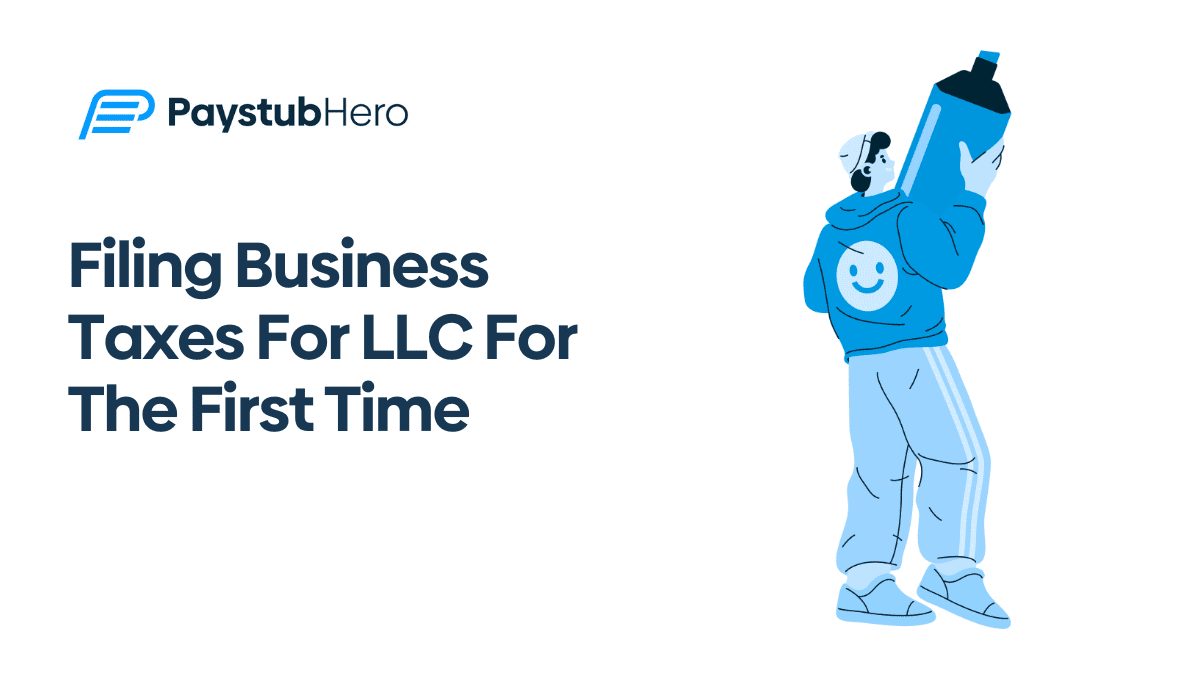Curious about what dose a garnishment look like on a pay stub? Imagine this. You’ve been working hard all month, putting in extra hours to meet project deadlines. Your anticipation grows as the pay day nears.
When the day finally comes, you receive your pay stub and see a reduction in your take-home pay due to a line item labeled ‘garnishment’. You ask yourself, “What does a garnishment look like on a pay stub?” Understanding what this means is essential to managing your financial health.
A garnishment on a pay stub is not an uncommon occurrence, but it can be confusing and even intimidating for many individuals. In its simplest form, a garnishment on a pay stub appears as a pre-tax deduction, thereby reducing your gross income and, subsequently, your net take-home pay. This can be quite a surprise, especially if you’re unfamiliar with how garnishments work.
Whether you’re an employee who has just discovered a garnishment on your pay stub, or an employer wanting to better explain this concept to your team, it’s essential to know what garnishments mean, how they appear on pay stubs, and how they affect overall income.
This knowledge can help you plan your finances more effectively, ensuring you stay prepared and informed.
In the subsequent sections, we’ll delve deeper into garnishments, check stub terminologies, the meaning of gross and net wages, and actionable steps to take if your wages are being garnished. Let’s demystify the concept of garnishment on a pay stub.
Table of Contents:
- Introduction
- Understanding Garnishment: A Deeper Dive
- Identifying Garnishments on Your Check Stub: A Comprehensive Guide
- Deciphering the Pay Stub Meaning: Beyond the Basics
- Gross Before or After Taxes? Understanding the Basics and More
- The Wage Meaning in the Context of Garnishment: A Crucial Perspective
- Practical Steps If Your Wages Are Being Garnished
- Paystubhero: Making Pay Stub Generation Easy
Understanding Garnishment: A Deeper Dive
To fully grasp the impact of garnishment on your paycheck, it’s necessary to delve deeper into what garnishment entails. Often referred to as wage garnishment, this process involves a legal withholding of a portion of an employee’s wages. This is typically enforced when an individual has defaulted on their debt payments, leading their creditors to seek legal intervention.
Garnishment is not a voluntary deduction like a contribution to a retirement account or a health insurance premium. Rather, it is a legal obligation, and employers are required to comply once they receive a court order or a similar legal directive.
The purpose of garnishment is to ensure the repayment of outstanding debts. This could be anything from unpaid taxes, defaulted student loans, child support arrears, or even credit card debts.
Once the garnishment begins, it can significantly impact an employee’s take-home pay, which can, in turn, affect their personal budgeting and financial planning.
It’s crucial, therefore, to understand the implications of garnishment. Recognizing its direct influence on your paycheck is a fundamental step towards comprehensive financial awareness.
This knowledge can help you better manage your finances, whether you’re an employee facing wage garnishment or an employer processing this deduction for your staff.
Identifying Garnishments on Your Check Stub: A Comprehensive Guide
To identify a garnishment on your check stub, you’ll need to have a clear understanding of the structure and breakdown of a standard pay stub. A typical pay stub includes various sections, each providing specific information about your earnings, deductions, and net pay.
When a garnishment comes into play, it appears as a distinct line item on your pay stub. Typically listed under pre-tax deductions, a garnishment stands separate from other regular deductions such as federal and state tax withholdings, retirement contributions, and health insurance premiums.
The specific amount deducted for the garnishment will depend on the nature of the debt and the legal rulings involved.
Keep in mind that the presence of a garnishment on your check stub is not merely a casual deduction. It’s a legally mandated one and serves as a clear indication that a part of your wages has been redirected to pay off a debt. It is essential to monitor these deductions closely, as they significantly affect your net earnings.
It’s also worth noting that garnishment laws vary by state, and the maximum amount that can be garnished from your paycheck depends on the type of debt and your state’s specific laws.
By being able to identify garnishments on your pay stub, you can better understand how much of your earnings are being allocated towards your debts, helping you stay on top of your financial situation.
Deciphering the Pay Stub Meaning: Beyond the Basics
When it comes to understanding your pay stub, it might feel like you’re trying to decipher a foreign language. Various acronyms, numbers, and jargon fill the small document, making it challenging to comprehend at first glance.
However, getting a handle on what each component means can be extremely beneficial in managing your financial health and planning for the future.
A key component you’ll often encounter is “YTD,” or Year-to-Date totals. This section of your pay stub provides a comprehensive look at your cumulative earnings and deductions for the year. It offers a broader perspective on your income and deductions, helping you to assess your annual earnings and plan for tax season.
Next, you’ll typically see a section dedicated to ‘pre-tax deductions.’ These are the deductions made from your gross wages before taxes are calculated. The usual suspects in this category include retirement contributions, health insurance premiums, and, of course, garnishments. By understanding the implications of pre-tax deductions, you can determine how they’re affecting your taxable income and, ultimately, your take-home pay.
Additionally, you’ll find sections for federal, state, and possibly local taxes, post-tax deductions, net pay, and more. Each element on your pay stub has a purpose and plays a role in the calculation of your final pay.
In essence, your pay stub is a financial document that outlines your earnings and deductions. It may seem complex, but taking the time to understand each element is crucial.
Decoding your pay stub means understanding your income, identifying where deductions are coming from, and recognizing how much is being set aside for obligations like garnishments. All these components contribute to your overall financial awareness and empowerment.
Gross Before or After Taxes? Understanding the Basics and More
When scrutinizing your pay stub, it’s easy to get bogged down in the specifics. Terms like ‘gross income’ and ‘net pay’ may seem straightforward, but understanding their role in your earnings can sometimes be a bit confusing. One question that frequently crops up is, “Is gross income before or after taxes?”
The answer lies in the fundamental understanding of these terms. Gross income refers to your total earnings before any deductions are made. It includes your regular wage, any overtime, bonuses, commissions, and other additional income earned during a pay period.
This is the number from which all deductions, including taxes and garnishments, will be subtracted.
On the other hand, net pay, often referred to as ‘take-home pay,’ is the amount left after all deductions have been made from your gross income. This includes federal and state taxes, Social Security, Medicare, health insurance premiums, retirement contributions, and of course, any garnishments.
So, in essence, your gross income is your income before any deductions, and your net pay is what you take home after all deductions have been applied. Understanding this distinction is vital, as it helps you see how much of your income is allocated to different areas, including how much is being garnished to pay off your debts.
It also allows you to gauge the impact of these deductions on your take-home pay, thereby helping you manage your budget more effectively.
Moreover, understanding the difference between gross and net pay can aid in tax planning and ensure compliance with legal obligations. It can help you to accurately report your earnings and avoid potential issues with tax authorities, reinforcing the importance of financial literacy and awareness.
The Wage Meaning in the Context of Garnishment: A Crucial Perspective
The term ‘wage’ is familiar to most of us, often used interchangeably with ‘salary’ or ‘income’. However, in the context of garnishment, the meaning of ‘wage’ takes on a significant role that goes beyond the general understanding.
In the realm of garnishment, ‘wage’ refers specifically to the portion of your earnings that is legally withheld to pay off your debts. It represents a clear and substantial commitment, mandated by law, to direct a portion of your income towards satisfying your outstanding liabilities. This is not a voluntary wage reduction or a discretionary deduction; it’s a legal requirement to address a debt obligation.
Seeing the term ‘wage garnishment’ on your pay stub can be daunting. It is a stark reminder of a debt that needs to be settled.
However, understanding what it means allows you to be better informed and more in control of your financial circumstances. It can also help you plan more effectively for the future, adjust your budget accordingly, and take the necessary steps to tackle your debt more effectively.
Moreover, it’s important to understand the legal implications of a garnished wage. There are regulations in place to protect employees from overly aggressive garnishment, with federal and state laws dictating the maximum amount that can be garnished from your wages.
In essence, ‘wage’ in the context of garnishment is a fundamental concept that shapes your understanding of your pay stub.
By familiarizing yourself with this term and its implications, you can better navigate your financial landscape, make informed decisions, and work towards improved financial stability.
Frequent Asked Questions
- Why does my check stub say garnishment?
Your check stub says ‘garnishment’ because a portion of your wages is being legally withheld to repay a debt. This could be due to unpaid taxes, child support, student loans, or other debts.
- What is the most common type of garnishment?
The most common type of garnishment is for unpaid child support. However, garnishments for unpaid taxes and student loans are also prevalent.
- What is the most they can garnish from your paycheck?
Federal law limits wage garnishment to 25% of your disposable earnings or the amount by which your weekly income exceeds 30 times the minimum wage, whichever is less. However, state laws can vary, and some debts like child support have different limits.
- Is wage attachment the same as garnishment?Yes, wage attachment is another term for wage garnishment. Both refer to the process where an employer is required to withhold a portion of an employee’s wages to repay a debt.








